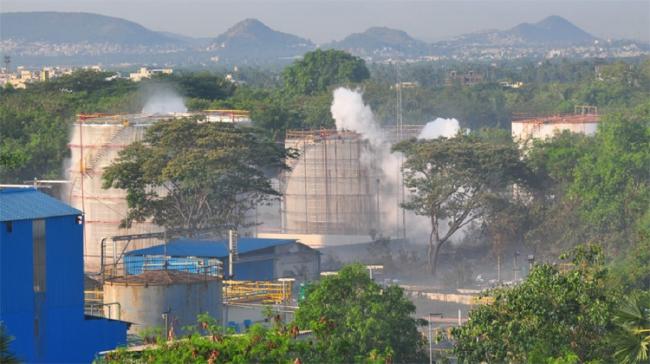High-Power Committee Submits Vizag Gas Leak Report, Blames LG Polymers

AMARAVATI: The high-power committee appointed by the Andhra Pradesh government to probe the LG Polymers Gas Leak disaster in Visakhapatnam has submitted its final report. Committee members submitted their detailed report on the industrial disaster to Chief Minister YS Jagan Mohan Reddy here on Monday.
The committee, headed by Neerab Kumar, after its multi-dimensional probe and assessment of the incident, came up with a voluminous report running into 4,000 pages. The panel highlighted several lapses in the report while blaming the LG Polymers plant management for its negligence in controlling the temperatures in the Styrene gas tank which, it said, has resulted in the gas leak.
Speaking after submitting the report to the chief minister, committee chairman Neerab Kumar said that what happened in Visakhapatnam on that fateful day was just not a gas leakage but a large amount of unregulated styrene was also released. A grave blunder has occurred in the case of LG Polymers plant incident as it becomes very crucial to maintain the temperatures in the tanks. Even the cooling systems were also found to be completely damaged ever since refrigeration pipes were replaced in December 2019, he said.
“The temperature recording apparatus was installed at the bottom of the tank and thus they were unable to notice the actual temperatures being built up in the middle and at the top of the tank. Even though styrene polymerisation was recorded way back in December, they never took it as a warning signal. The rise in temperature inside the tank, styrene reaching a boiling point and later escaping out in the form of vapour has caused the gas leak disaster. LY Polymers should take the blame for the rise in temperature in the tank resulting in the accident.
“Even after the accident happened, LG Polymers acted in a negligent manner. Siren was not pressed after the accident even though there were alarms installed at 36 places on the plant premises. Not keeping the sirens active on the plant premises is the biggest laxity on the part of LG Polymers. Also, the chemicals used to control Styrene were not adequately available in the plant. Had it been the case, there were chances of styrene being quickly neutralized. Because of this, these chemicals were to be requisitioned all the way from Gujarat. But by then, the temperatures in the tanks soared high,” Neerab Kumar said.




